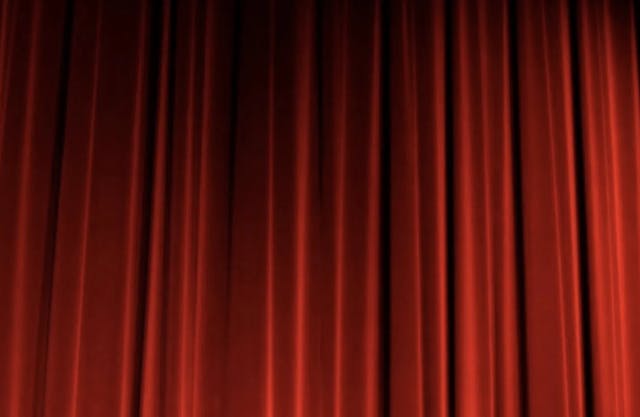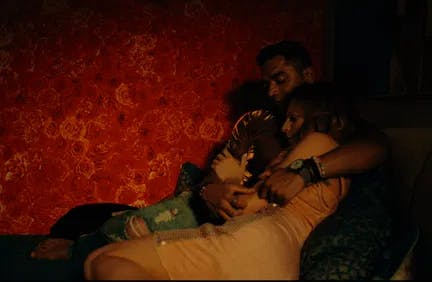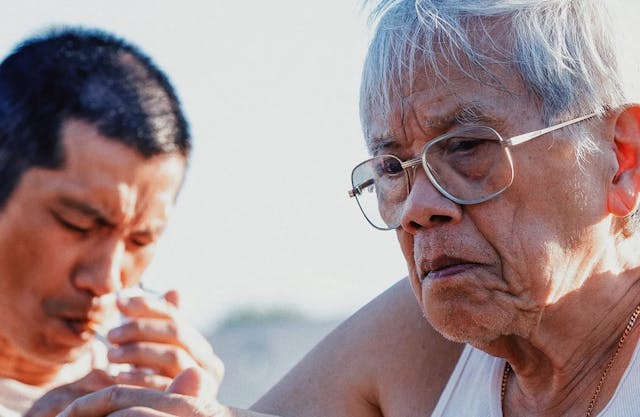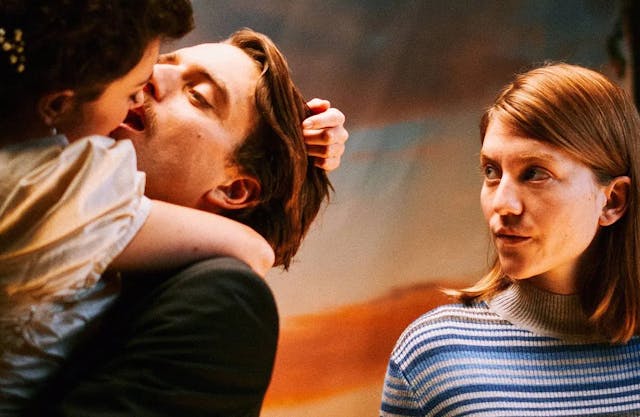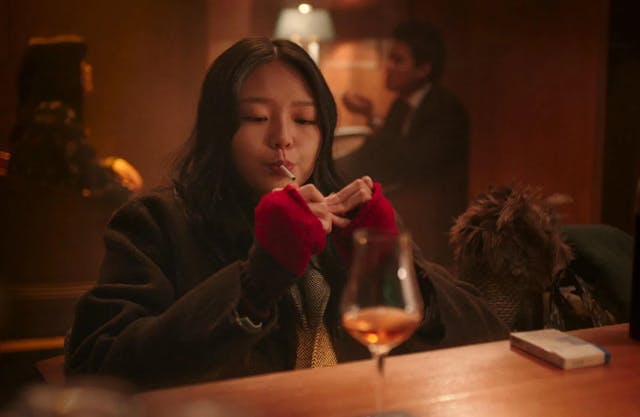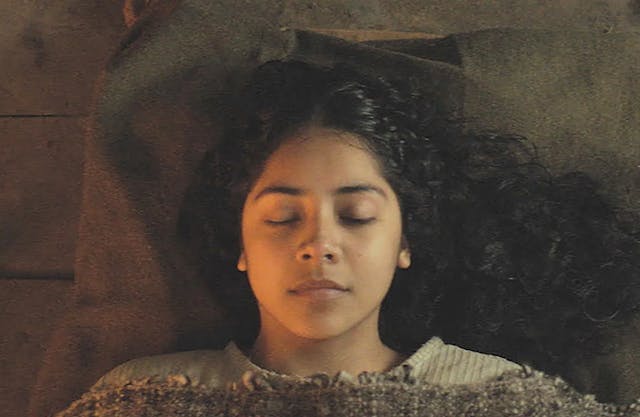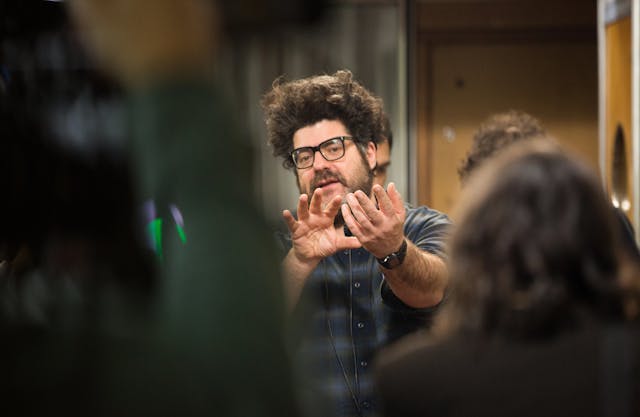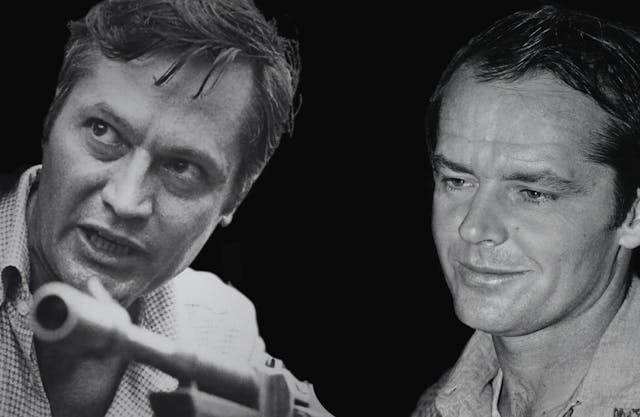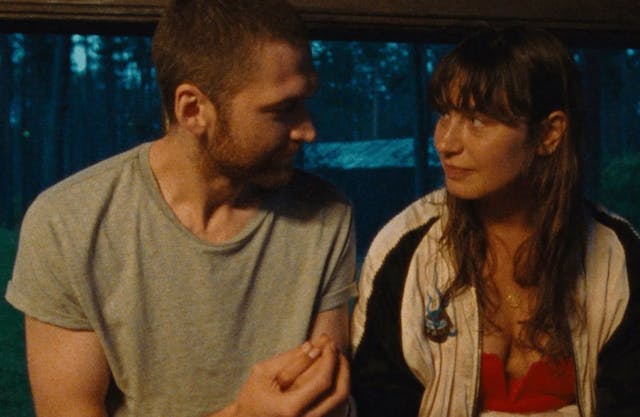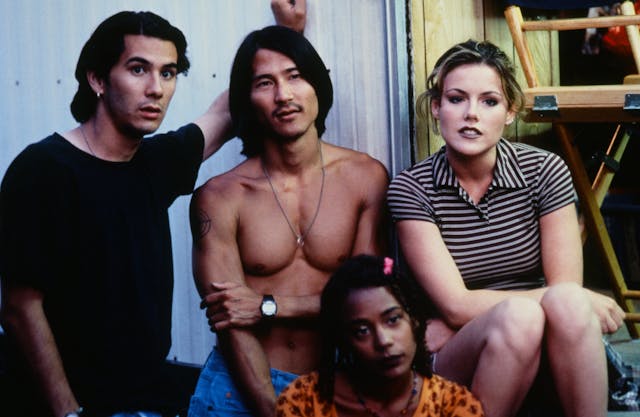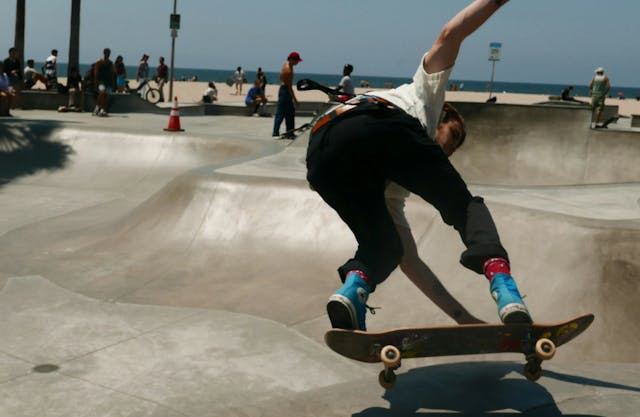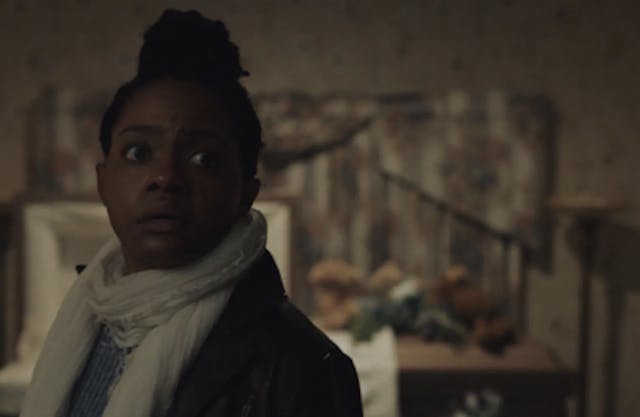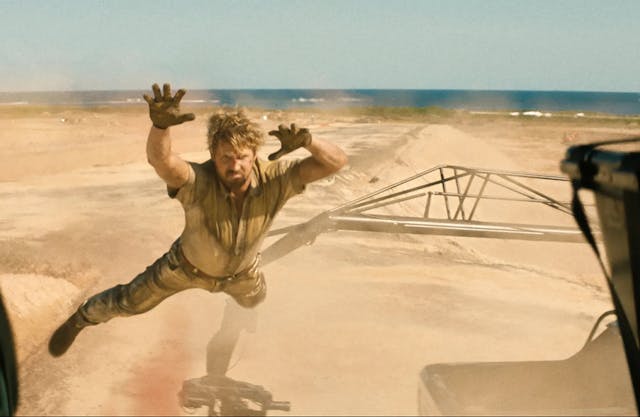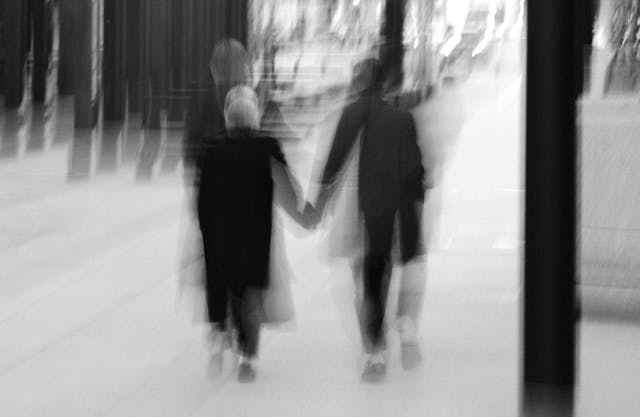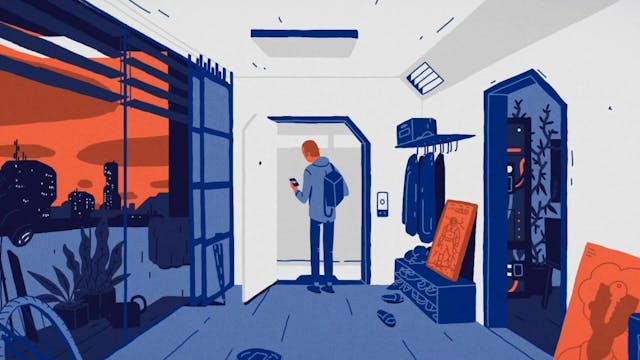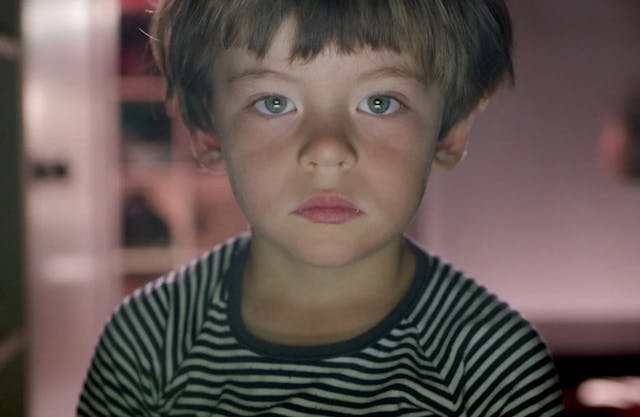"The Beast" at Large: Bonello gives Seydoux Three Roles for the Ages

Back to black: Seydoux surrenders to the machines in "The Beast" / Photo courtesy of Janus Films.
Bertrand Bonello’s “The Beast” begins with a simple scene that hints at the complex mosaic of ideas embedded in the narrative to come. An actress (Lea Seydoux) follows the directions of an unseen man, walking her through what seems to be the scene of a horror movie. She must pretend she is inside a house, accosted by an unseen beast. She is not inside a home. Not even a simulacrum built in a studio. She moves around on the green-screened emptiness. The background and the floor are equally tinted. At times, it seems like she is floating on air. The only other real element besides her is a knife. An off-screen man compels her to pick it up. Then, she is ordained to walk around an invisible wall and scream at the sight of the unseen monster. She goes beyond the call of duty. The blood-curdling scream seems to tear apart the image in the electronic noise of a corrupted digital image.

Face the fire: Seydoux and McKay are tempted by infidelity in 1910s Paris in "The Beast" / Photo courtesy of Janus Films.
Performance, illusion, and fear make an explosive combination in “The Beast,” echoing through three different narrative strands featuring Seydoux as a woman called Gabrielle and George McKay as a man named Louis. In 1910s Paris, she is a high society woman tempted into an affair by Louis, a British traveler haunting the elegant halls of the bourgeoisie. In 2014, in Los Angeles, she reappears as a model trying to jumpstart an acting career while housesitting a rich man’s house to pay the bills. George is an incel virgin stalking her. In 2044, they are strangers who meet when applying to a bizarre government program that makes you immune to emotion as a requisite to enter the workforce. Then again, it’s not that bizarre. By then, artificial intelligence had made humans useless, living without purpose.
In a nifty trick, Bonello conveys the future by erasing the urban window dressing we are used to expecting to hold on to figure out where and when the plot takes place. There are no cars, people, or personal electronic devices. The later Gabrielle roams empty streets. The sole advertisement on the street marks a nightclub named after years of the past, changing according to the playlist to which indifferent crowds bump in the night. What else is there to do if machines do all the work?

Cue Robyn's "Dancing on My Own": Seydoux is alone in a crowd of 2014 Los Angeles in "The Beast" / Photo courtesy of Janus Films.
Bonello co-wrote the script with Guillaume Bréaud and Benjamin Charbit. The trio found inspiration in Henry James’ “The Beast in the Jungle.” The short story, easily available online, is a cautionary tale. A man holding an irrational fear of an abstract “beast” out to get him finds solace and companionship with a lonely woman. Obsessed with his fear, he fails to see the chance for love she offers. His foolishness is the beast he dreads so much. When he figures it out, it’s too late to do anything. The movie opens the discreet plot and blows it up through different time frames, making a kaleidoscopical meditation on thwarted desire. Like in James’ story, “The Beast”’s characters seem constitutionally incapable of doing what’s best for them. They're always too late when deciding or saying the right words. Fear stops, stalls, or freezes them to act.
The script takes the main idea and twists it around according to the era, shading the main character’s fearful stasis with signs of the times. At the beginning of the XX century, Gabrielle is too concerned with social propriety until fate deters the lovers with crushing finality. In the 1980s, urban loneliness and male toxicity do away with the possibility of love. In the future, technology poses an insurmountable obstacle to romantic realization.
Each narrative strand is compelling, but how they echo one other makes the movie an existential meditation with endless interpretations. Symbols appear and reappear, each time with a different meaning. Take notice of dolls as a recurrent motif. In Paris, Gabrielle’s material fortune comes from her husband’s thriving toy factory, where they are introducing rubber as a new material, ready to displace wood and china. In Los Angeles, Gabrielle’s sole company at home is a chattering monstrosity that doesn’t do anything besides noise - think Furby, but creepier. In the future, the system assigns Kelly (Guslagie Malanda), a life-size, human-seeming self-described doll, to accompany Gabrielle. Kelly wants to get intimate with Gabrielle, but it’s hard to detect passion in her desire. Kelly blazes quietly into the pantheon of artificial intelligence tech as a poignantly failed approximation to human awareness, like Hal in “2001: A Space Odyssey” (Stanley Kubrick, 1968) and the humanoids of “A.I. Artificial Intelligence” (Steven Spielberg, 2002).

Hello, Dolly!: Seydoux hits the bar with humanoid Kelly (Guslagie Malanda) in "The Beast" / Photo courtesy of Janus Pictures.
From electricity to DNA alterations, technology conveys misguided progress, ready to veer us down the wrong path. To be considered for the 1% of humans gainfully employed by the system, Gabrielle must subject herself to a battery of exams that will dig into her past lives to determine if she can control her emotions enough to function efficiently - feeling is a liability. We see her getting the tests, submersed in a poll of black goo, as a robotic arm introduces a needle through her ear. The display brings organic and post-human qualities to mind, which evokes Seydoux's incursion in David Cronenberg’s tribute to marriage and art in “Crimes of the Future” (2022).
Reincarnation and memory scanning? This way, Bonello makes spirituality and technology warring religions. Or perhaps, forces working in harmony to push human beings through predetermined paths. If early-century Gabrielle fails by delaying making a fateful choice, her future self is powerless in front of the system. She has no choice at all. And when she faces the finality of that destiny - in that lifetime, at least -her blood-curling scream pierces your soul. It sounds like the one Aughts Gabrielle deployed at the invisible foe absent from the empty green screen. One is fake, conveyed for entertainment. The other one is full of existential horror. Both sound the same. It is one of plenty of echoes, rhymes, and reflections.

Move over, Meryl!: Seydoux cements her status as one of the best working actresses in "The Beast" / Photo courtesy of Janus Films.
It’s not by chance that “The Beast” may remind you of David Lynch’s “Mulholland Drive” (2001) and “Twin Peaks: The Return” (2017). The two films and the TV series coincide in their strategies to bend, disjoint, and reconfigure narrative with startling effect. They share an elusive quality that does not incur confusion. You don’t figure them out but experience them. Bonello invites comparisons with clear allusions that may ring superficial but speak their common language. Gabrielle experiences the disdain of a trio of cool girls in two timelines, similar to Diane Selwyn’s (Naomi Watts), at the dire home party in “Mulholland…”. Both women close their cinematic journeys, screaming as they face the inescapable horror of their existence. It’s not by chance that Laura Palmer (Sheryl Lee) joins the shrieking chorus in the final moments of “Twin Peaks: The Return.” Or is it Carrie Page? Identity is porous in these malleable realms of existence. ‘What year is this,” utters agent Dale Cooper. Indeed.
In this labyrinth where you careen at breakneck speed, you need a sturdy performance to hold on to. “The Beast” offers Lea Seydoux the role of a lifetime, or rather, three roles. Each Gabrielle is compelling by herself, and gains complexity compared to her alter egos. Add up her performances in “France” (Bruno Dumont, 2021), “One Fine Morning” (Mia Hansen-Love, 2022), and “Crimes of the Future” (Cronenberg, 2022), and you can build a sturdy case to name her our best working actor now. Her range is astonishing, and she does not lose her cool when she tackles movies at their most commercial - think "No Time to Die" (Cary Joji Fukunaga, 2021) and "Dune: Part Two" (Denis Villeneuve, 2024). It’s a shame that McKay, her partner in time-and-dimension travels, is less interesting. In a way, the movie shortchanges him. He is equal in the first part and almost steals the 2014 segment away with his terrifying incel - never scarier than when he foregoes human connection -. Still, he barely registers in the final stretch of 2044. It's not his fault. The movie barely has any use for Louis by then. Maybe it’s just as well. Seydoux can fill centuries of stories by herself. This mind-bending mix of melodrama, horror, and science fiction is one of the best films of the year.
Watch “House on Haunted Hill”
A millionaire offers $10,000 to five people to spend the night in a large, spooky rented house with him and his wife.
Stream NowWant to get an email when we publish new content?
Subscribe today
